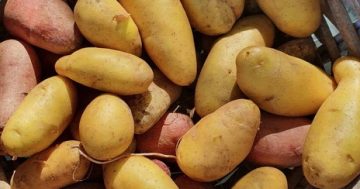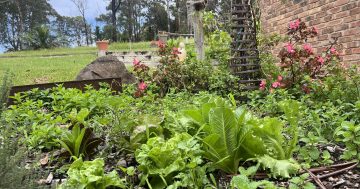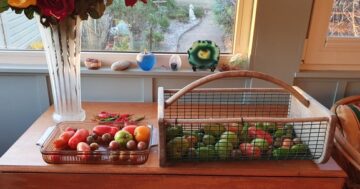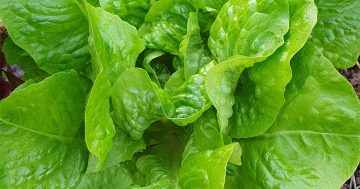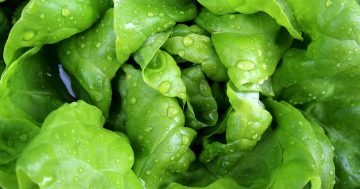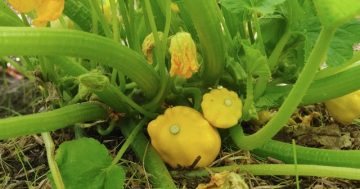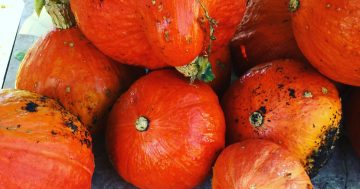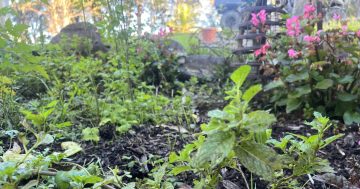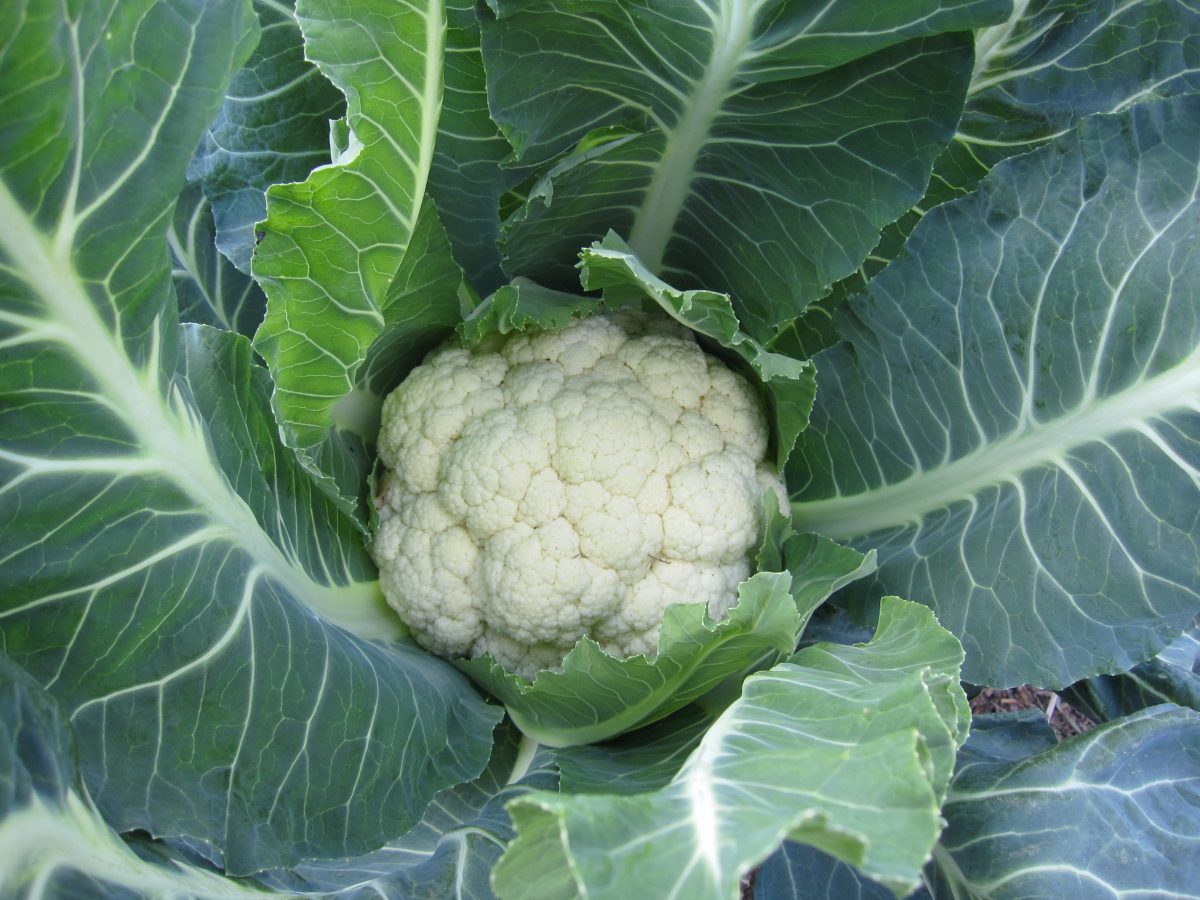
Cauliflowers will benefit from the change in the weather. Photo: Supplied.
The news from the weather experts is that La Nina is finally ending with a significant easing in rainfall.
This means drier weather, warmer overnight temperatures, more clear sunny days, and a reasonable expectation that summer vegetables such as tomatoes, eggplants, corn and peppers will ripen over autumn.
So don’t rip them out yet, especially if you have fruit getting close to maturity. The same goes for pumpkins – just wait a little longer for Cucurbita maxima to ripen.
Cucurbita are a diverse group – since they have been around for 4000 years or so, arising in sunny South America, let’s afford them a little patience! They’ve had a hard couple of years, with too much rain and too little sun.
However, remember that as the weather cools, this may mean a winter with more frosts.
A lot is happening in the garden, with plenty to harvest and much to plant. Vegetables (both seeds and seedlings) planted through autumn will be eaten in the winter months and into spring.
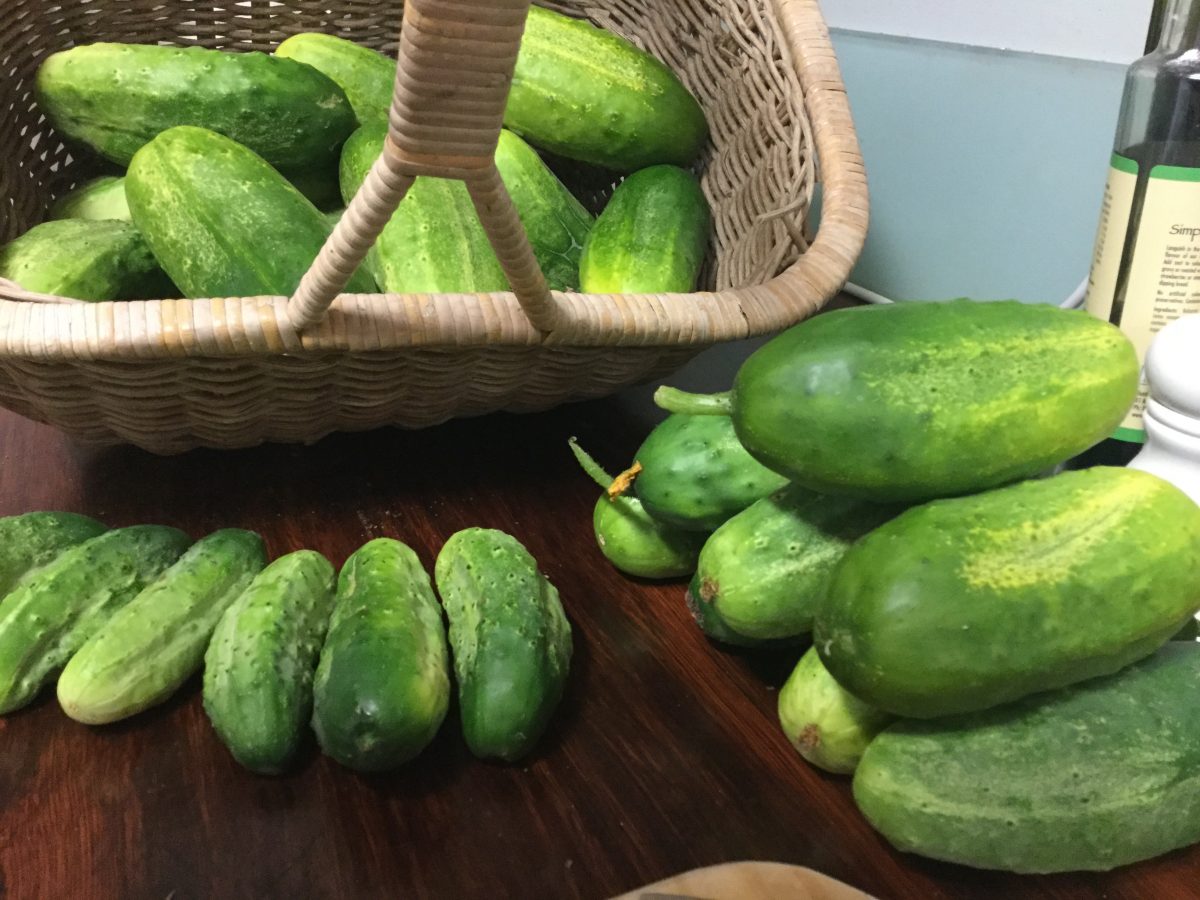
Cucumbers and other summer vegetables will continue to ripen. Photo: Supplied.
There are so many wonderful cold-tolerant veggies that can be planted through autumn. Asian greens and Asian turnips are quick-growing planting choices as temperatures cool.
Asian turnips such as Tokyo market, hinona kabu or hidabeni planted as seed now can be harvested in six to eight weeks. They are versatile as they can be cooked, used raw in salads or pickled.
For greens, start with the choys: bok and pak, and don’t forget choy sum, mibuna, mizuna, Chinese broccoli and tatsoi. Plant these now as seeds or seedlings. They all thrive through autumn.
Of course, there are plenty of brassicas to plant now too. Start planting seedlings of cabbage, broccoli and cauliflower, a few every week for at least this month and into April. They will have time to develop a solid frame and good leaf cover for the heads to come.
Just be prepared to protect the cauli and broccoli heads from frost damage when they develop in late April or early May. Tie or use elastic bands to bring the leaves together over the heads in a bunch. This is highly effective.
A bounty of root crops can also be planted now. Carrots, parsnip, European turnips, swede and beetroot should all be planted as seeds. Don’t waste your time planting root crop seedlings (except for beetroot). As the seed germinates, it develops a long tap root that can be easily broken upon transplant. Much better to start from seed.
Cool-season or winter lettuces, English spinach, silverbeet or chard, rocket, collards and kale all grow well through autumn and into winter.
But remember, as the frost season starts, these greens will all benefit from some protection. Plenty of materials can be used: old sheets, tablecloths, shower curtains, feed sacks, hessian, shade cloth; the list is endless.
Place these over plants at night and commit to regular removal. Specific horticultural fabrics are also available. It is important that they are breathable, permeable and allow light penetration (a minimum of 50 per cent light penetration), and these can be left in place for the entire frost season.
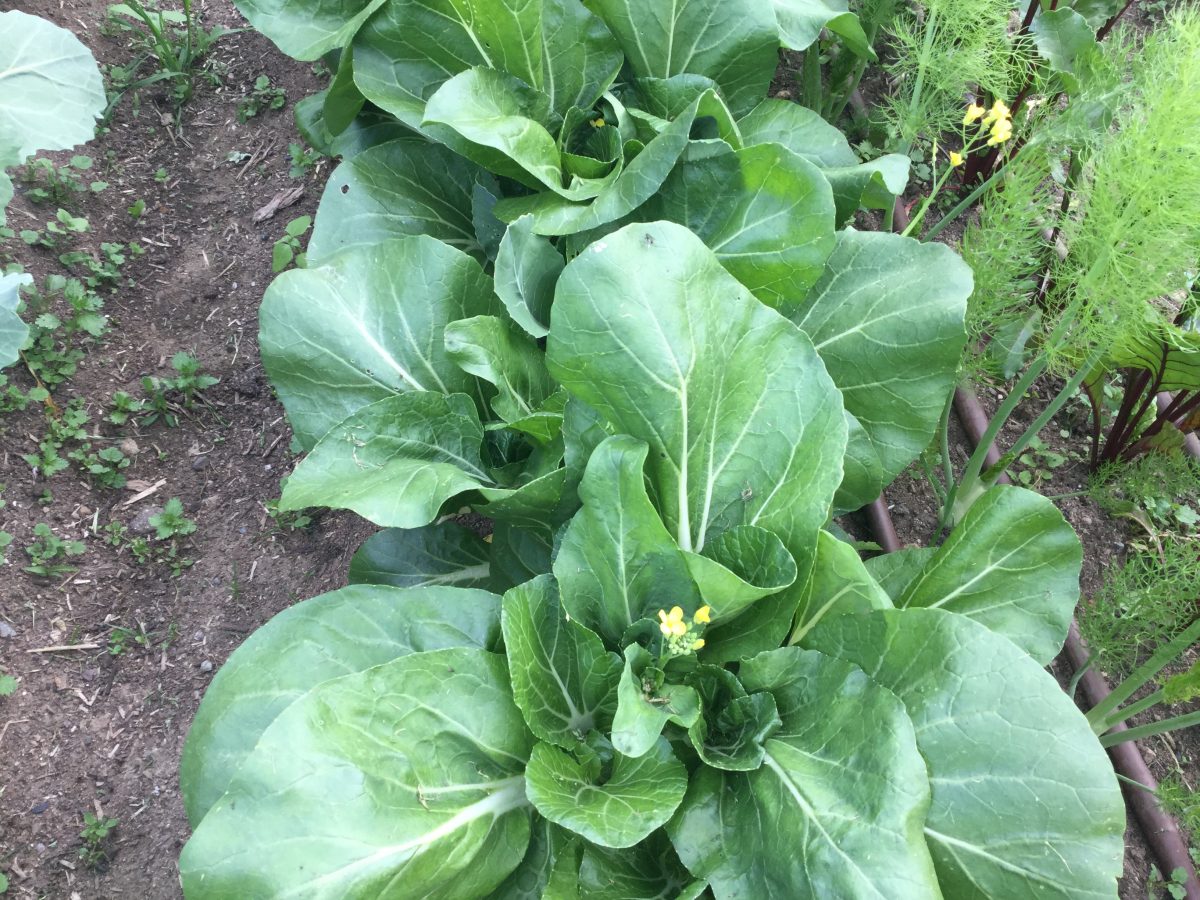
Brassica leaves need to be secured to protect the developing heads. Photo: Supplied.
Autumn is a good time to give everything a feed. Compost can be added as mulch, and as there are still pests around to deal with, use Dipel for the brassica caterpillars and insecticidal soap for aphids and white fly. Great organic solutions for persistent infestations that you might see in a warmer March.
Stomping snails is still a popular pastime in our kitchen garden, as is squashing cabbage grubs. Manual removal can be so satisfying!
A word about harvesting and preserving summer fruits: classic, simple methods will have you enjoying these once-a-year veggies well into the next few seasons.
Tomatoes can simply be bagged and frozen (reuse your light plastics). Put just enough in each bag to use in a casserole. Blanching and freezing is also effective for beans and broccoli. For chilli, peppers, eggplants and cucumbers, making sauces, chutneys or pickles works well.
Root vegetables including potatoes can simply be left in the ground. Carrots, parsnips and potatoes can be covered with a little extra soil or mulch around their tops as frost may shrink the soil a bit and ”pop” these veggies above the soil surface where they can be damaged by both sunlight and frost.
Having a good variety of vegetables growing at any one time in your kitchen garden will help you achieve seasonal eating. There is nothing better than eating the best-quality and flavourful vegetables grown in your own garden. Happy growing!
Bronwyn Richards and Helen Lynch run Wynlen House Artisan Village Farm and Learning Centre, a small village organic market garden in Braidwood, NSW. Since 2006 they have grown and sold fresh vegetables, eggs, preserves and garlic and teach others to do the same.















